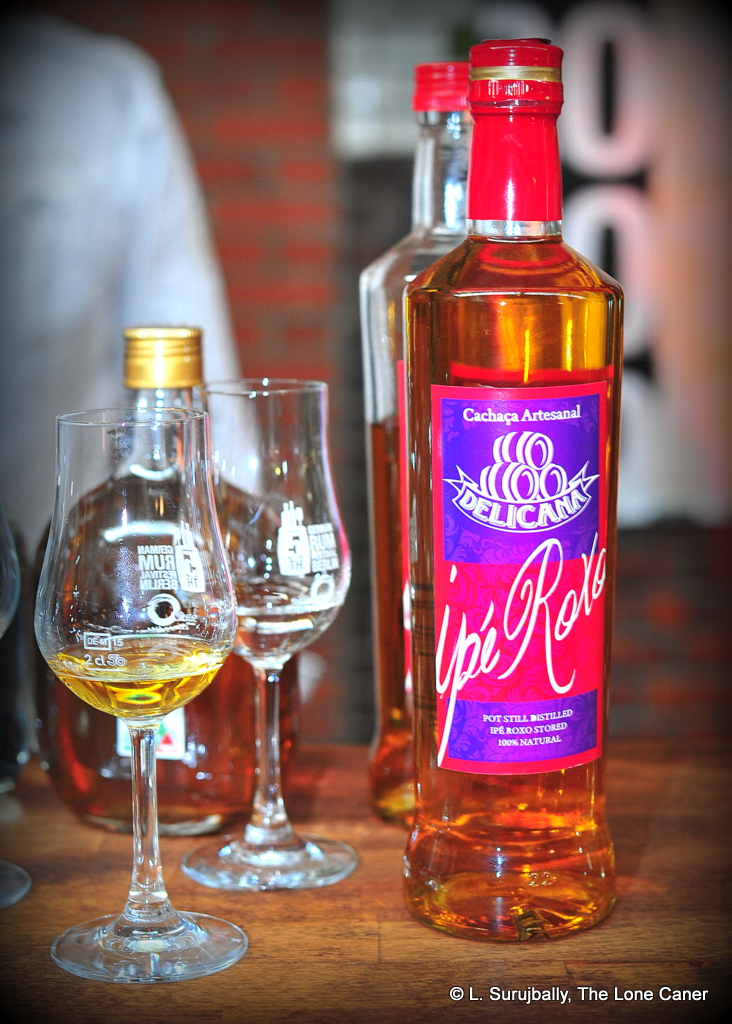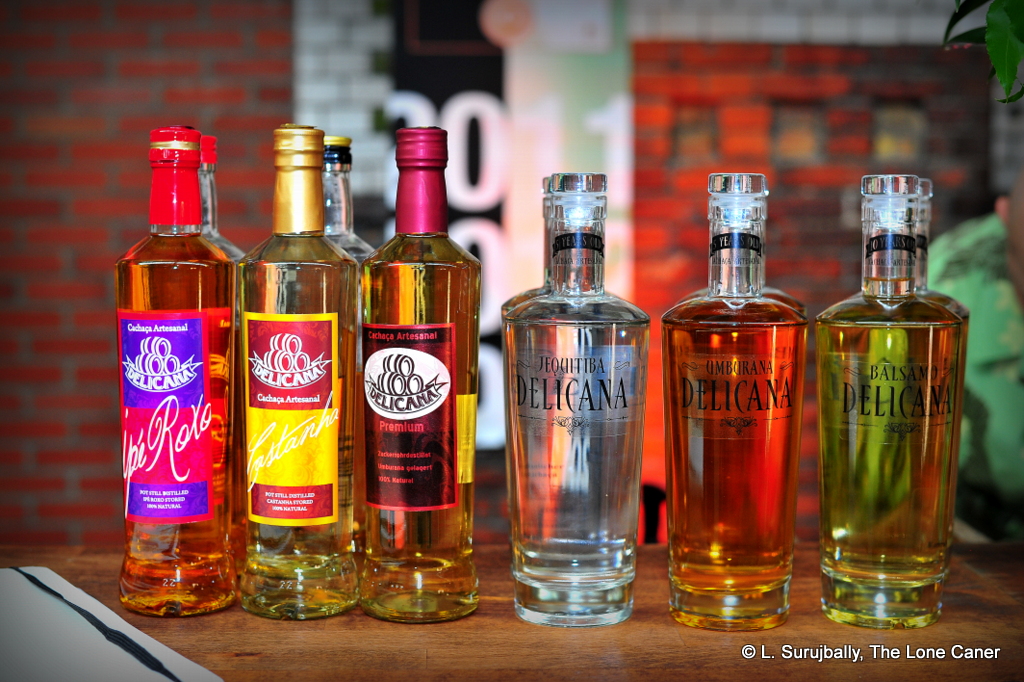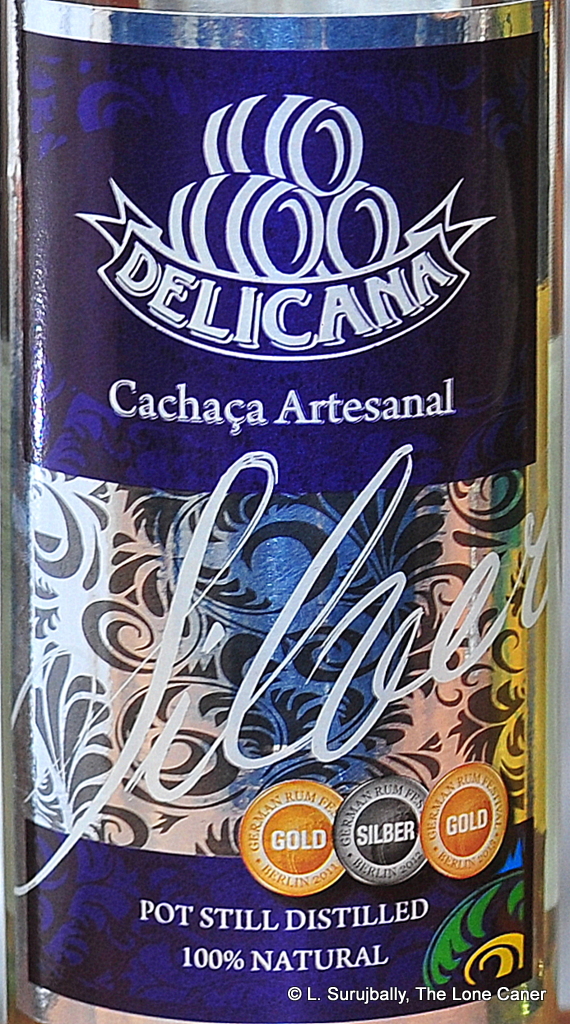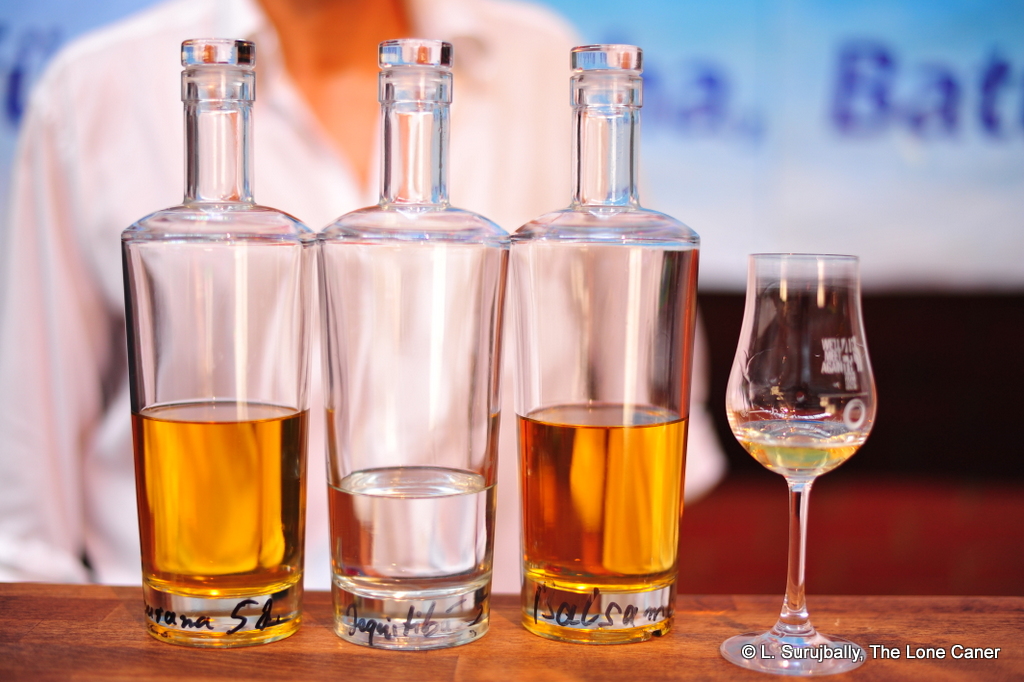#290
In 2014 I looked at three very different aged cachaças from Delicana, the German maker of Brazilian rums; I had met the owner, Bert Ostermann, who has had a love affair with the country lasting many years at the Berlin Rumfest and we had a long and pleasant conversation. The central theme of his work was to age his rums in local woods, which gave them a piquant, off-base profile that at the time I didn’t care for – indeed, I scored the youngest of these rums the best, because I felt that the peculiar tastes of the wood had not had time to totally dominate the rum.
A year later I made it a point to stop by his booth again, and retasted all three which were back on display, and comparing my written notes, I find very little difference, either in the tastes, or my own opinions – the wood is just too different, and perhaps I’m not in tune enough to appreciate them the way a Brazilian might.
The current crop of cachaças, on the other hand, was something else again and I enjoyed these somewhat more – they’re still not world beaters (to me), but much more like a drink you can sip than the previous go-around. Rather than take the time to write individual essays around each one, I’ll repeat the exercise from before and provide the notes all at once. Here they are:
 Castanha Artesanal Pot Still 2 Year old – pot still, aged in Castanha wood
Castanha Artesanal Pot Still 2 Year old – pot still, aged in Castanha wood
Strength 40%, colour pale orange
Nose: Very agricole like, starting off with salt and wax before becoming vegetal and grassy, dusted lightly with cinnamon and something spicier, like (no kidding) quinine.
Palate: Clean, clear, light, watery, vegetal and grassy, with some sweet corn water in there. It’s like tasting a colour, the light, sun-dappled, tropical green filtering through a jungle canopy. Hints of cinnamon, mint leaves and a slightly bitter back end, not unpleasant at all
Finish: short and sweet, more mint and vegetals, warm and unaggressive
Thoughts: If it wasn’t for the vague but distinctive wood and cinammon, I’d say this was an agricole. But of course it isn’t…it’s way too individual for that. A pretty good drink
80/100
 Ipé Roxo (“rose coloured”) Artesanal pot still, aged 8 months in Ipé casks
Ipé Roxo (“rose coloured”) Artesanal pot still, aged 8 months in Ipé casks
Strength 40%, colour orange-gold
Nose: lovely intro, lemon zest, red olives, very vegetal and grassy, quite smooth
Palate: Smooth and easy, lots more red olives and tomatoes, cucumbers freshly sliced, mown grass, a few unripe white guavas….and a bit of dill. Tart on the mouth, quite nice.
Finish: Short and a little uneven, but warm and gentle for all that. More olives and brine, some soya and sweet pickles
Thoughts: Slightly better than the older Castanha (Bert is going to shake his head at me, again); I attribute that mostly to better balance in the flavours, and the lemon was really well integrated with both wood and herbals.
81/100
Strength 38%, white
Nose: Pow! Exploding phenols and wax and brine, petrol and hot asphalt. Was this really just 38%? Amazingly potent stuff, this, erratic and untamed, almost wild….it reminded me of the Haitian clairins, actually, and I mean that in a good way
Palate: Like the Jamel, it did a one-eighty degree turn. Thin and watery cucumbers in brine, vague vanillins, white sugar dissolved in extremely diluted lemon juice, a tad oily in mouthfeel, some sweet baking spices in there, cinnamon and nutmeg, too light to really be noticeable, but all serve to tame the nose.
Finish: Gone in a flash, hardly anything except crushed grass and a faint banana whiff
Thoughts: Should be stronger to make the point the nose advertised
77/100
Final comments
None of these rums is new, and two have won prizes, so it’s not as if Bert spent the last year refining his output, tweaking his ageing regimen and changing his barrels in any way. But these are all younger than the ones I tried back in 2014 and I liked them more – they were lighter and cleaner in some way, integrated their tastes better, and the influence of the woods was held in check in a way that allowed more diffident flavours to come through. I wonder if that will turn out to be a characteristic of the type, that the ones under five years old will be the better ones. The journey continues.


